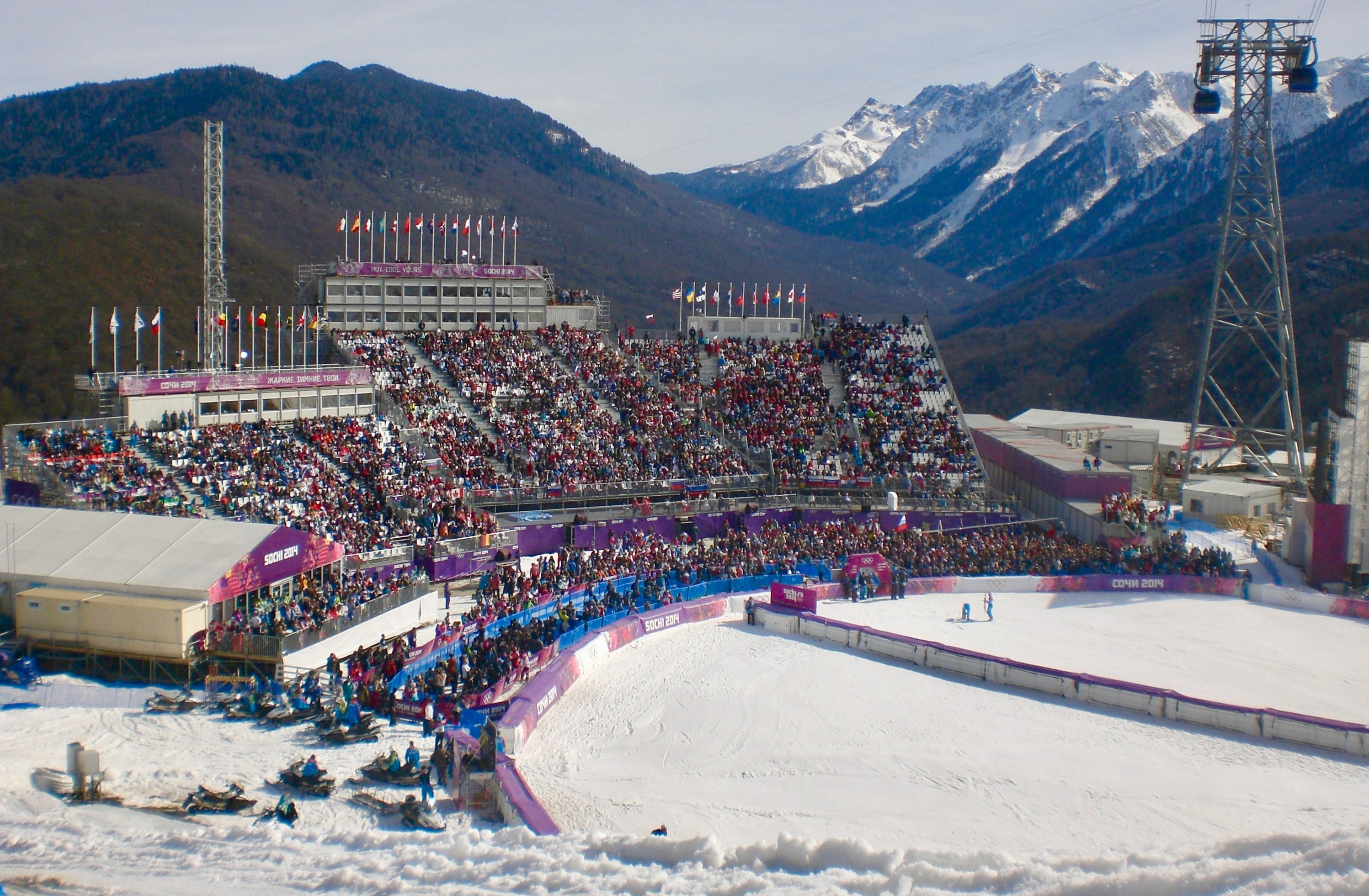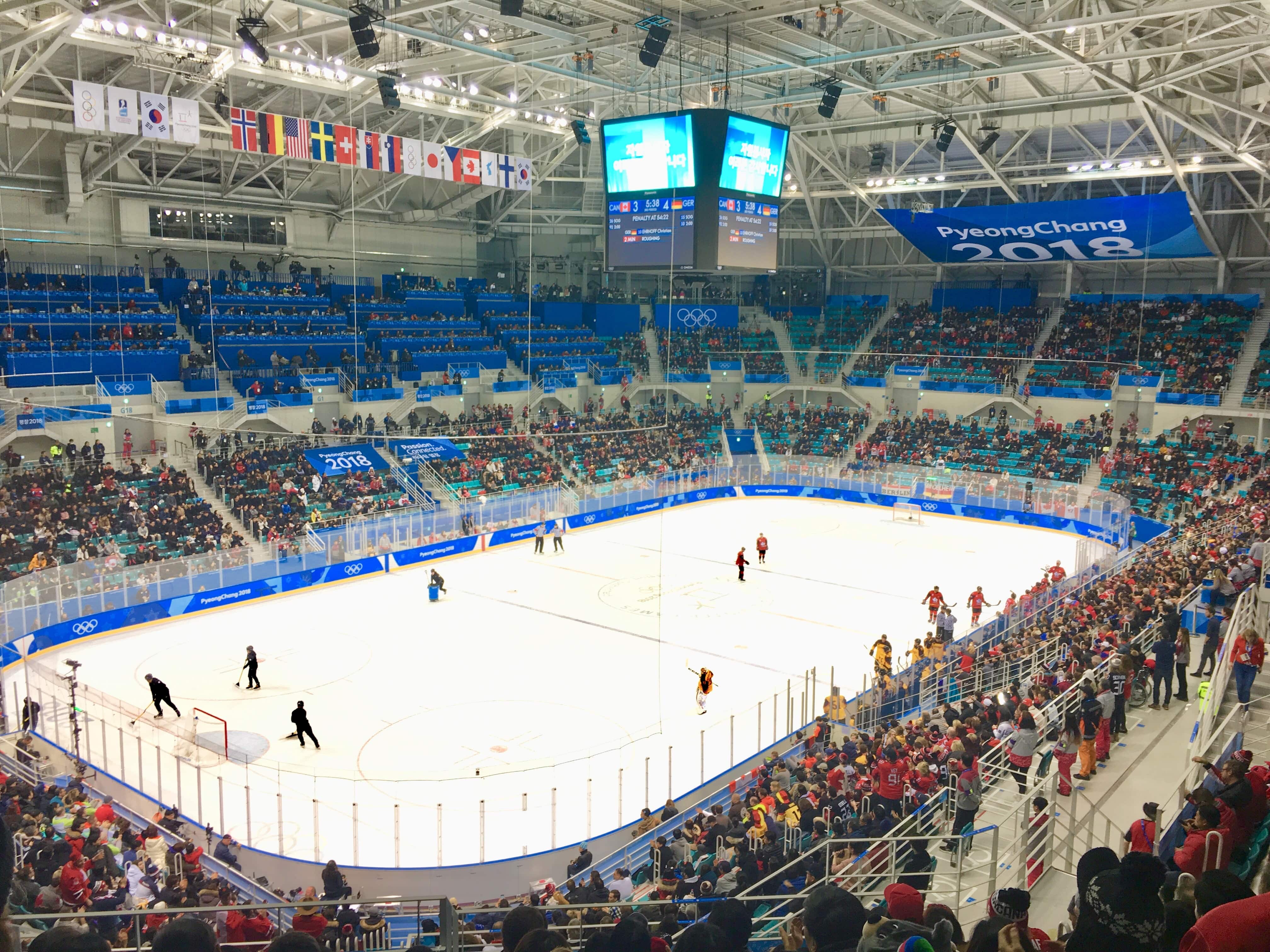
Three Key Differences Between Sochi 2014 and PyeongChang 2018
|🇷🇺 • 🇰🇷| Anyone who knows me knows that two of my favorite things are hockey and travel. Therefore, when the Winter Olympics roll around once every four years, I don’t want to be anywhere else. The Olympics (both summer and winter) are the height of sports diplomacy. For two weeks, the world puts differences aside to bond over the achievements of its greatest athletes.
Where the Hell is Matt is probably the YouTube video(s) I’ve watched more than any other. Why? Well, it’s not because he’s a good dancer (sorry, Matt), but instead because he ingeniously brought people from all across the globe together through one silly dance. It was a remarkable demonstration of humanity and a reminder that people, despite deeply-rooted cultural, political or religious differences, are fundamentally all the same. The Olympics manifest a similar theme, and I love it.
I will admit, as a spectator, planning for the Olympics can be a bit overwhelming. Accommodations are always a headache. Event tickets can be tricky and often expensive. Booking flights is an intense chess match with the airline due to unusually high passenger volume. Infrastructure completion dates always seem to run right up to the opening ceremony making it difficult to secure plans in advance. Often times the city is hosting 5-10 times more people than they’re designed to accommodate resulting in long lines and the unavailability of certain services. The list goes on.
All that said, for me, navigating the logistics puzzle is well worth the effort. I attended Sochi 2014 and PyeongChang 2018. Both were fantastic trips. While in PyeongChang, it was fun comparing different elements of the experience to Sochi. Although the quality control between the two Games was impressive, there were of course many differences. From a casual spectators’ perspective, these three stood out to me.
(Note: It would be difficult to argue that the biggest difference between the two Games was anything other than the overall dollar spend. The Russians rang up a US$51B price tag (by far the most expensive in history), while the Koreans kept theirs to $13B. As mentioned, the below differences are from a visitors’ perspective, not a political, cultural or economic one.)
1.) Spectator Registration
When arriving in Sochi, I was unsure of what to expect regarding entrance to the events (in typical fashion, I flew from Singapore to Russia without a single ticket in hand). Turns out, all visitors were required to register at an Olympic office that had been set up outside the village. Personal information was exchanged, a photo was taken and a lanyard was distributed which granted you access to the park. Jumping through this hoop caught me by surprise and figuring out what to do and how to do it ended up costing quite a bit of time.

Four years later, I was determined to avoid this process becoming the inconvenience it was in Sochi. I approached the Gangneung Olympic Park on the first day and immediately began looking for the registration. After walking in circles a few times, I learned that there wasn’t one. Instead, each visitor just had to buy a cheap, $2 (daily) general admission ticket.


Summary: In Sochi, entering the village was free but complicated. In PyeongChang, it was simple but came at a small cost.
2.) Travel Time Between Clusters
Obviously, Giant Slalom cannot be held at the same venue as Curling. As a result, the Olympics are divided into ‘clusters.’ In the winter, there is usually one area for the stadiums (hockey, speed skating, curling, figure skating, etc) and another for the mountain events (skiing, snowboarding, bobsledding, skeleton, etc).
As the crow flies, the two clusters in Sochi were about 20 kilometers (12 miles) from each other. There were several ways to travel between the two – taxi, train, bus. I went via bus (+ a newly built gondola) and it took about 40 minutes. It was a smooth and gorgeous ride up into the Caucasus mountains.


In PyeongChang, the distance between Gangneung Village (stadiums) and the Phoenix Snow Park (mountain) was close to 60 kilometers (37 miles), three times what it was in Sochi. Additionally, traffic was a mess and buses were limited. It took me 90 minutes to drive there by taxi and cost over $100. This was the least enjoyable part of my trip. Given the efficiency of the train between Seoul and PyeongChang/Gangneung, I was disappointed that there seemingly wasn’t the same level of planning put into transportation between clusters.
Despite the grind to get there, the venue itself was terrific. It was also fun to serendipitously catch up with a Pakistani friend during the event. While writing this post and compiling the photos, I realized that I wore the same brown coat to Sochi and PyeongChang. Maybe it’s time for a new one?

Summary: I know I said finances were going to be left out of this, but Vladimir Putin’s massive highway project should have been an indicator of the importance of inter-cluster transportation and its impact on spectator experience.
3. No NHL-ers
Leading up to the 2018 Games, the NHL banned any player on contract from participating in the Olympics. For the hockey world (and beyond), this was a huge change. As a result, countries were forced to recruit elsewhere. A few players came from the AHL, while the majority were sourced from top European pro leagues such as the KHL, SHL, DEL and Liiga.
In 2014, I scalped a last-minute ticket to the Canada vs. Sweden gold medal game. During the introduction ceremony, I remember looking down the line of names on the back of the Canadian jerseys. It was essentially the who’s who of hockey. It was incredible to have that much talent in one building. Despite a strong effort from the Swedes, Canada went on to win gold. Needless to say, it was one of the most memorable games I’ve attended (although not as memorable as the women’s final three days earlier).


In PyeongChang, the dynamic was much different. The lack of NHL superstars had leveled the playing field making it anybody’s tournament to win. For me, someone who’s familiar with the hockey landscape, I enjoyed the change of pace. It was great to see different players given the chance to represent their country and also to watch many viewers become more in tune with the high-caliber skill level of the various European leagues. I went to the Canada vs. Germany semi-final game. The Germans steamrolled the Canucks.

Summary: For the majority of sports fan, the PyeongChang hockey scene was likely a significant downgrade from Sochi. However, I imagine a small percentage of people, like me, appreciated it. We’ll see what happens in Beijing 2022.
Have you been to the Olympics? What did you think?

I was in Sochi but not South Korea. Your estimate of the distance to the mountain cluster is way off. Google maps says it’ 48 km from the Adler train station to the Krasnaya Polyana station, which is still at the bottom of the mountains from any of the venues. I took both buses and trains from Adler to the mountain cluster. They both worked well.
The weak link in the chain was getting up the mountains. We had tickets to a biathlon event. When we tried to get on the gondola near the train station we were directed to a different gondola, which turned out to be something like a 30-minute walk. At the top of that we still had a long walk to get to the biathlon stands. My friend faked an injury and got us a ride up the hill. We arrived in time to see the last few people cross the finish line. There were a couple other events where they directed us toward the other gondola and we insisted on going on the one by the train station. It was always working and there was no good reason, as far as I could tell, for directing us elsewhere.
You said it was free to get into the clusters in Sochi but you had to have a ticket and the tickets were far from free. I don’t know how much the tickets were in South Korea but I spent well over $10,000 for tickets in Sochi, including over $800 for the biathlon event I missed.
I’ve been back to the coastal cluster and skied at the mountain cluster since the Olympics. I was surprised to discover that almost all of the coastal cluster venues are regularly used (although there isn’t much demand for the curling venue). The mountain cluster was fully operational and loaded with skiers. I expected hotels to be easy to get but that was not the case at the mountain cluster in the winter or in Alder in either the winter or the summer. I had taken a train to Adler for the Olympics. I drove this time. I hadn’t realized just how congested the entire area is. This was true in both the winter and the summer although the summer was even worse. I suppose it was even worse during the Olympics but since I wasn’t driving I hadn’t noticed.
When we took the train from Alder to the mountain cluster pretty much all of the security that existed for the Olympics was still there. At Krasnaya Polyana they still had the metal detectors to get onto the gondolas. You still had to go through security to get into the coastal cluster and I assume the individual venues although I didn’t go into any so I can’t be positive. I had assumed that a lot of the security was just for the Olympics but it turns out I was wrong.
I was suggested this blog by my cousin. I am not sure whether this post is written by him as nobody else know such detailed about my difficulty. You’re incredible! Thanks!
I could not refrain from commenting. Very well written!
Say, you got a nice post about the Olympic Games! Really looking forward to read more. Awesome.